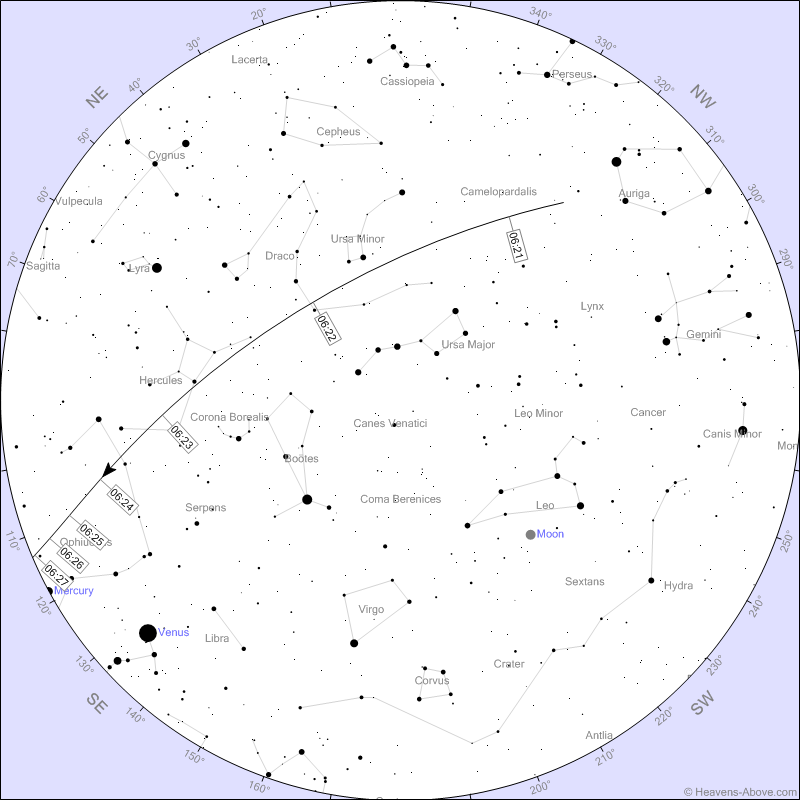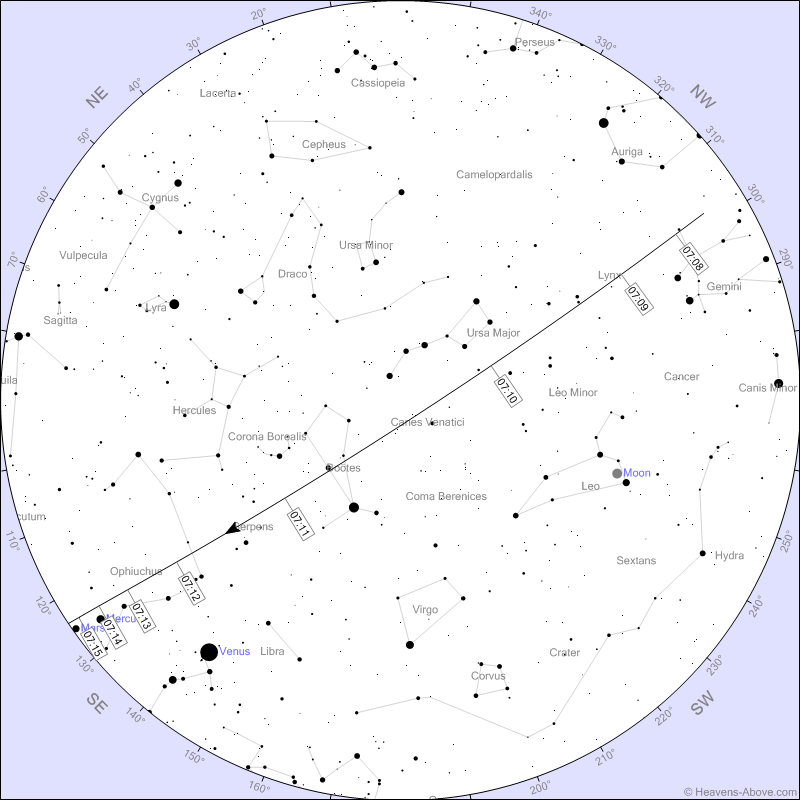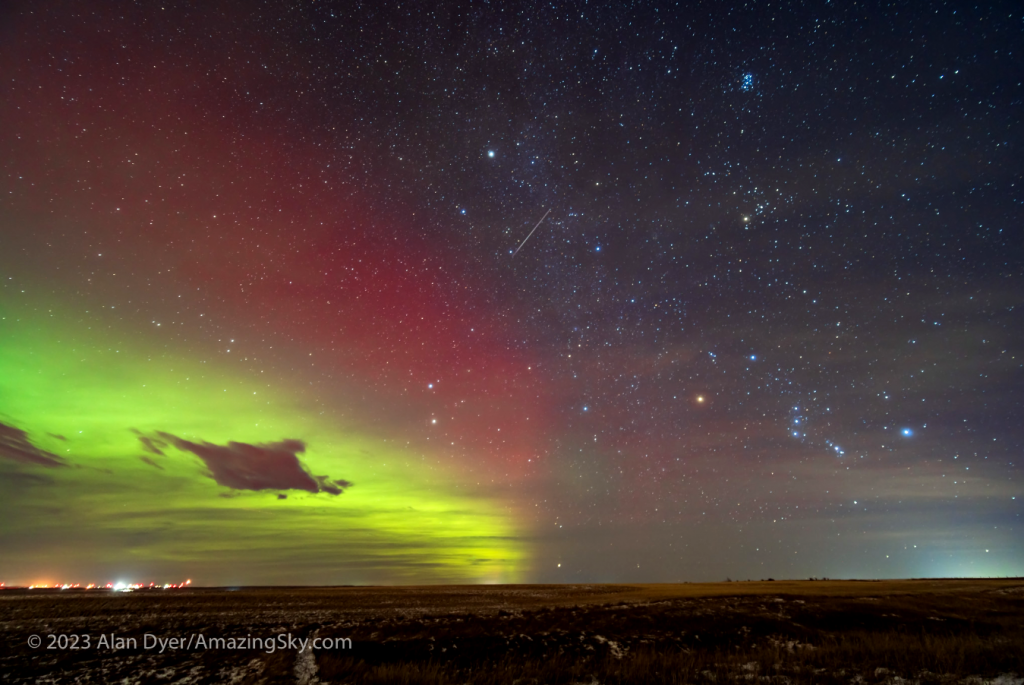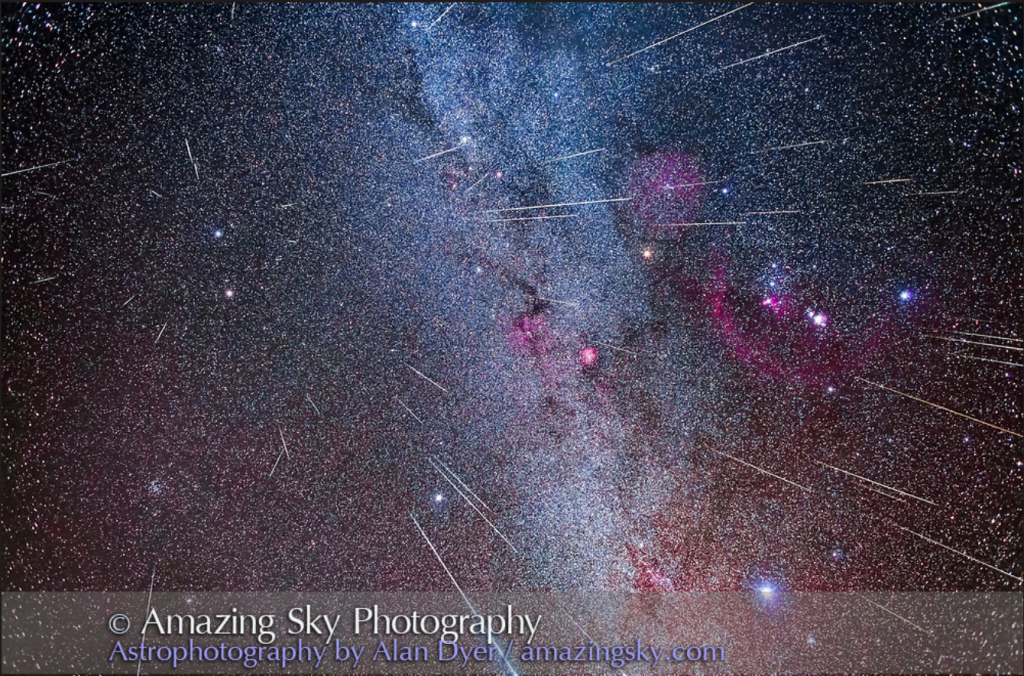Greater Toronto Area Space Station Flyovers for the week of December 31st, 2023
As shown above, on Monday, January 1, 2024 from 6:21 to 6:25 am EST, the International Space Station will be visible flying high overhead of the GTA in an extremely bright pass, exiting Earth’s shadow high in the northwestern sky above the bright star Capella and then flying between the two dippers before setting below…
Read more









